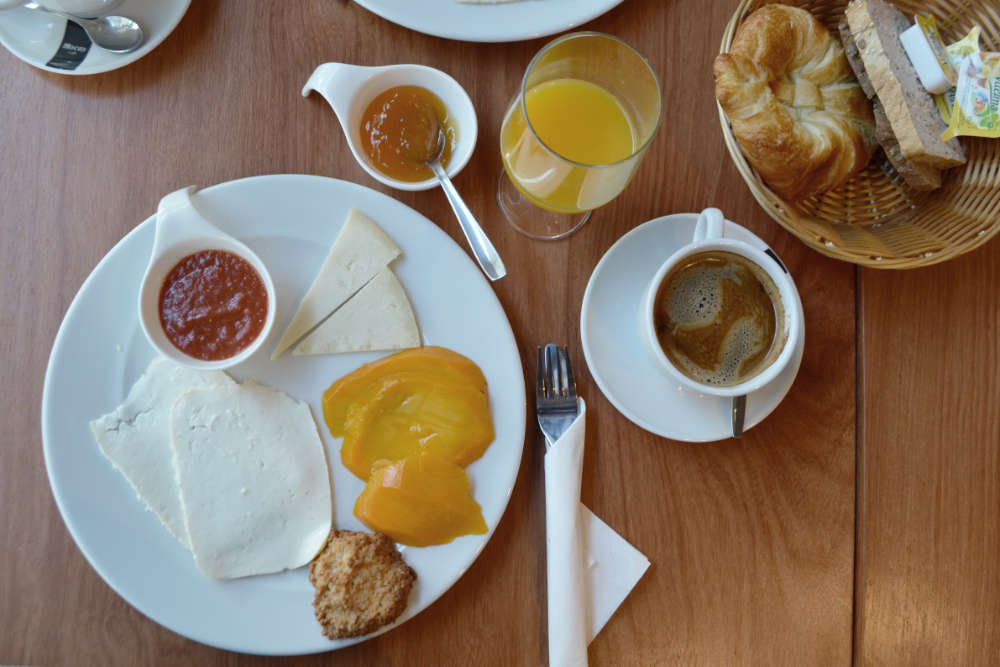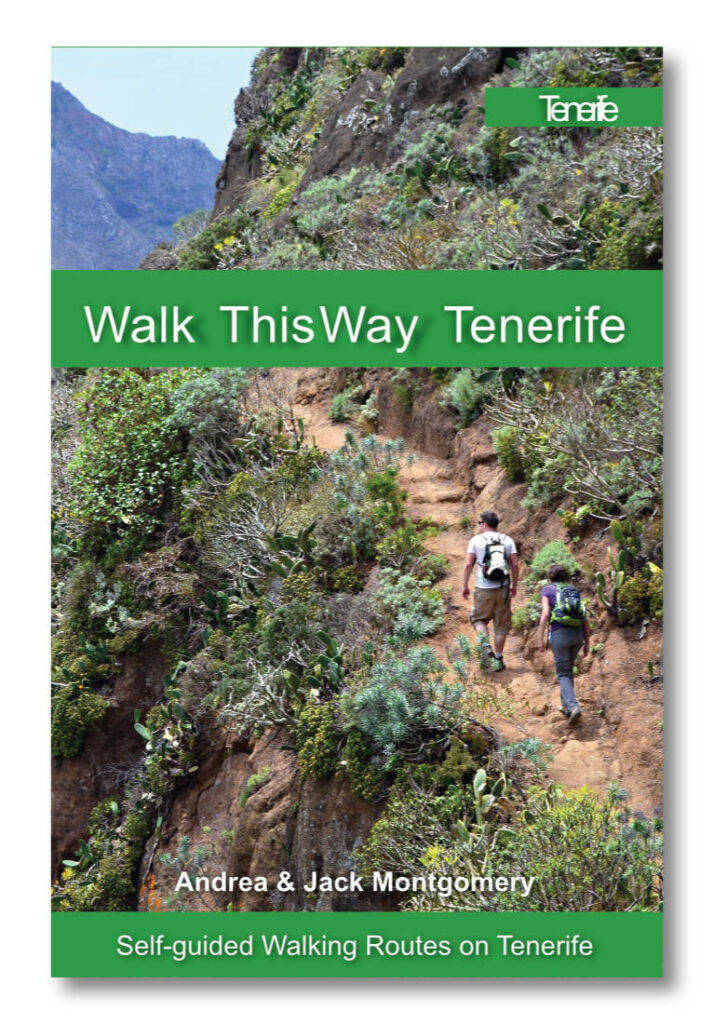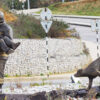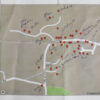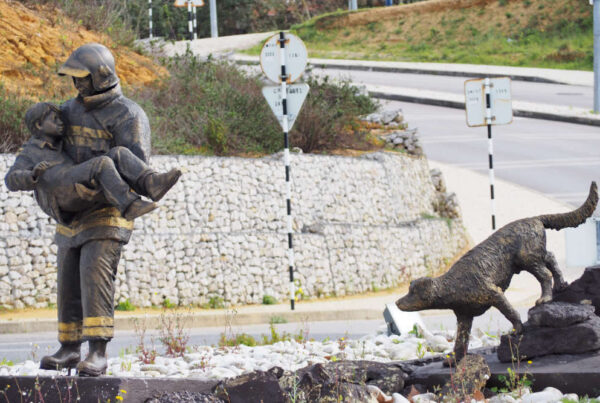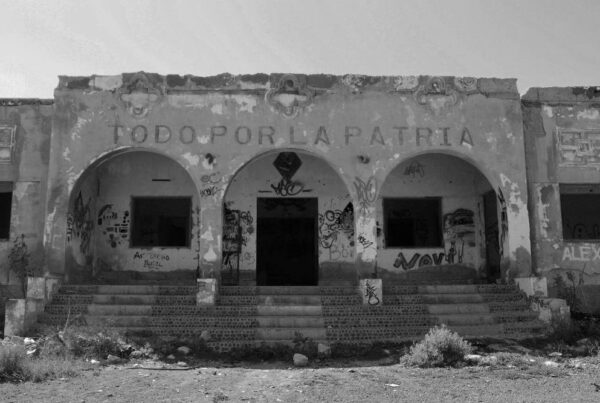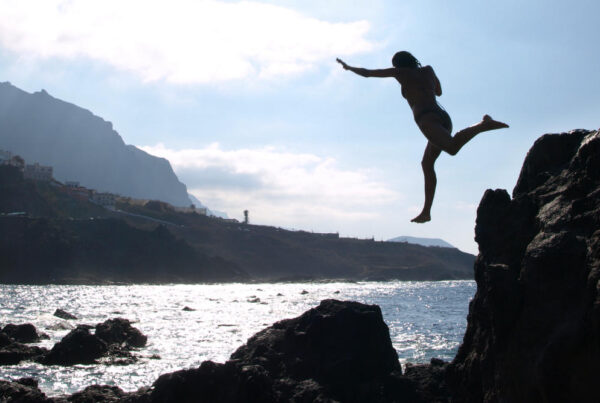Croquetas de jamón; jamón Ibérico; queso de oveja; patatas bravas; salmorejo; ensaladilla rusa; carilleras de cerdo; carne de cerdo picada con berenjenas; arroz con leche; tabla de Ibéricos; lomo Ibérico; albóndigas de cerdo Ibérico; buñuelos de bacalao; garbanzos con morcilla y chorizo; tarta de queso y membrillo; paté de hidago de pollo; arroz con chocos y gambas; pulpo; secreto de cerdo Ibérico; helado de queso de cabra; helado de castañas; tartar de presa Ibérica; presa Ibérica gratinado con pimientos; tronco de atún con crema de mojama y boletus; leche frita; croquetas de jamón, cordoniz, y bellota; ensalada de langostinos crujientes y aguacate; revuelto de setas del terreno con jamón Ibérico de bellota; papadum de patatas rotas con lasquitas de presa marinada y sopa de tomate; queso de cabra; chocos fritos, patatas bravas.
Eating local
Above is the running order of the food we ate in Andalusia. I left it in Spanish as that’s generally the way it was on menus when we ordered. It mostly involves local ingredients, especially mushrooms (setas, boletus) and Iberian black pig (cerdo Ibérico), which features a lot, an awful lot. Fourteen times in the dishes we ate, and that doesn’t include breakfast where it makes yet more appearances in various guises. When I travel, I enjoy exploring the local food scene. It wasn’t always the case. Up until I was about twenty-three, I was gastronomically conservative. The change coincided with a move to multi-cultural Manchester. Now, one of the highlights of travel for me is trying local cuisine because a) it’s usually tasty and b) I get a kick out of experiencing different flavours similar to the one I get from visiting places that are unfamiliar. Plus, the chances are ‘local specialities’ are what any area is going to do best.
Despite cerdo Ibérico regularly turning up on the plate, it didn’t feel like I was eating the same thing over and over as, vegetarians look away now, various parts of the pig produce differing flavours. Croquettes aren’t the same as loin fillet or pork cheeks, neither of which are the same as the cured hams. Still, as the saying goes, you can have too much of a good thing. So, while I’m more than happy to eat local at lunch and dinner, at breakfast I quite like to give my digestive system a break with fruit, yoghurt, cereals etc. When we’re walking I don’t have a cooked breakfast as, at the first ascent, I tend to get an attack of dry, salty mouth. But I’ll treat myself to one at some point if the opportunity presents itself.
Eating local, until…
In Andalusia’s rural heartlands, we stayed in three establishments, all with quite different approaches to breakfast. The first had a display of homemade cakes and pastries worthy of a pastelería. There was the ubiquitous jamón and queso, but fruit was on the light side and there were no cereals. You go traditional, you get traditional. It comes with the territory.
The owners of the second had a zero miles food philosophy. Breakfast consisted of a range of products made by them or sourced locally. But there were also cereals and creamy tubs of freshly made yoghurt. Olive oil flavoured with honey and drizzled on lightly toasted organic bread was a revelation. I love it when breakfast options surprise as much as restaurant menus. But there was no cooked option. One of the owners told me some British guests had a moan about this and questioned why people who travelled to traditional areas in any country would want to eat the same as they did at home. The answer I gave him was illustrated by what happened at our third hotel, a larger establishment in a former convent. Breakfast there consisted of the usual Spanish selection of cured hams, cheeses, pastries, and cakes. But there were also various fruits, cereals, sausages, bacon, tortillas, and fried and scrambled eggs.
The majority of the other guests were Spanish, and most did what I’ve witnessed non-Brits do in numerous locations across southern Europe when faced with a cooked breakfast option, they made straight for the hot stuff.
When it comes to the first meal of the day, a cooked breakfast seems to trump all others, irrespective of anyone’s nationality.
But you know what? It wasn’t as good as the brekkie in the middle hotel, because cooked breakfasts are a British thing not a Spanish thing. Food is almost always better where it is an intrinsic part of any area’s gastronomic scene.
